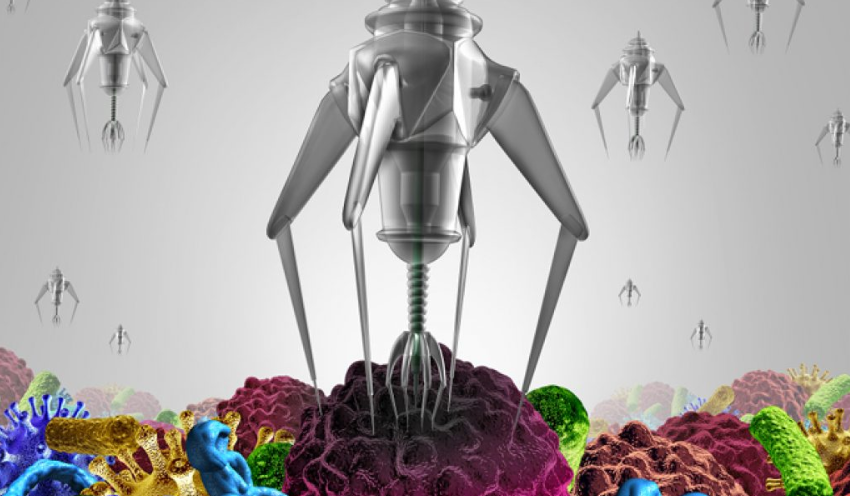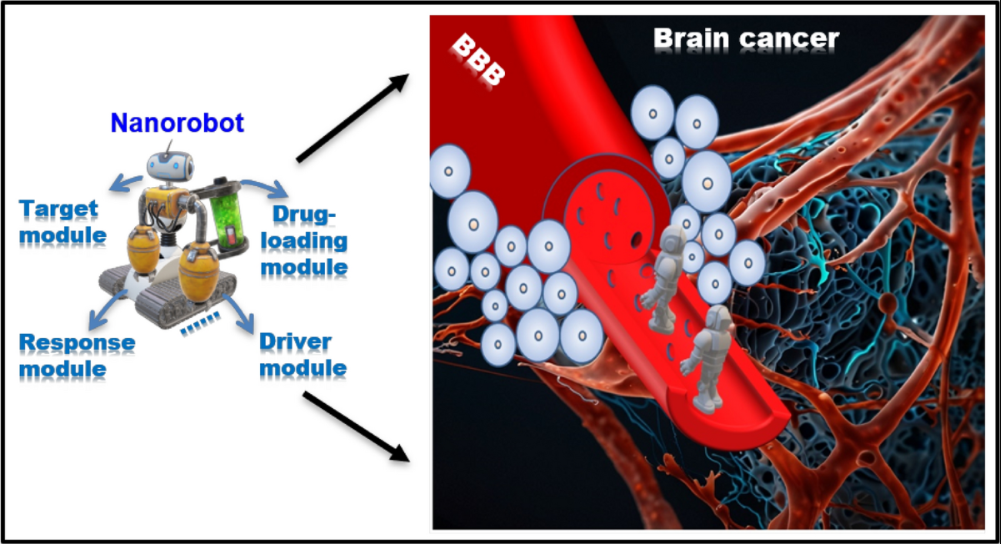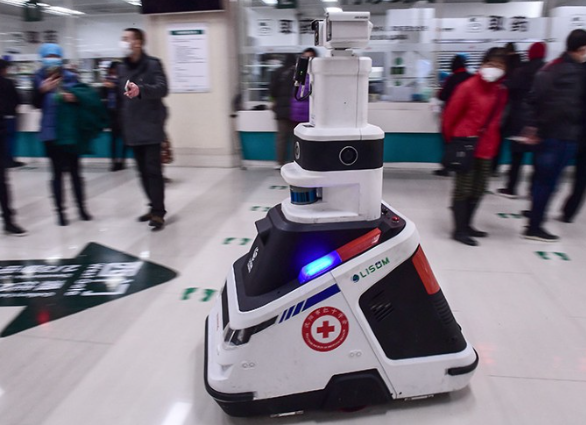
Imagine microscopic machines coursing through your bloodstream, capable of morphing their shape on demand to unclog a stroke victim’s artery, navigate the complex maze of your brain to deliver a drug precisely to a tumor, or repair damaged neural tissue like a hyper-advanced, adaptable cellular handyman. Forget rigid metal automatons; the future belongs to Shapeshifting Nanorobots. This isn't science fiction borrowed from a comic book; it's the cutting edge of nanotechnology and AI-driven design, converging to create machines that redefine our concept of what a robot can be. This article delves deep into the captivating world of these nanoscale transformers, exploring their revolutionary design principles, the mind-bending materials enabling them, the groundbreaking applications they unlock, and the unique challenges standing between concept and life-saving reality. Buckle up as we journey into the invisible realm where engineering meets biology, guided by intelligence smaller than a cell.
Unlocking the Mechanics: How Do Shapeshifting Nanorobots Actually Work?
The magic of Shapeshifting Nanorobots lies not in magic, but in sophisticated design inspired by nature and powered by advances in materials science and computational control. Unlike conventional nanobots with fixed structures, these entities possess the remarkable ability to reconfigure their form dynamically in response to environmental cues or external commands. This transformative capability stems from several key mechanisms being pioneered in labs worldwide.
Engineered Molecular Switches and Programmable Folding
One primary strategy draws inspiration from the complex folding of proteins – nature’s origami masters. Researchers are designing nanoscale components using DNA origami or specialized polymers that act like hinges, locks, or sliders. Embedded molecular triggers, sensitive to specific stimuli like light (photonic control), a change in pH, the presence of a unique biochemical marker found only near a tumor, or even a targeted magnetic field, cause these components to activate. Imagine a nanoscale puzzle. Upon encountering the "key" stimulus, bonds shift, hinges unlock, and sections fold or slide, causing the entire structure to reconfigure into a new shape optimized for a specific task, such as extending grappling arms, opening a cargo bay, or streamlining for faster travel through dense tissue. A 2023 study from the Technical University of Munich demonstrated a DNA-based nanorobot that could switch between a compact "travel" shape and an open "cargo" configuration when exposed to UV light, showcasing precise controllability.
Phase Change & Responsive Materials
Beyond mechanical joints, another approach utilizes materials that inherently change their physical properties under specific conditions. Think of materials analogous to shape-memory alloys used in eyeglass frames or stent implants, but engineered at the nanoscale. Gallium-based alloys, for instance, can be designed to melt at near-body temperature (or slightly above it via localized heating). In a solid state, the robot might be rigid and needle-like for penetration. Apply localized heat via infrared light or magnetic fields, and the material liquefies, allowing the robot to flow into a confined space, surround a target like a micro-thrombus, and then solidify again for extraction or to exert controlled mechanical force. Similarly, hydrogels that swell or contract dramatically when detecting specific molecules can provide powerful actuation forces, enabling Shapeshifting Nanorobots to push, squeeze, or grip. This material-centric approach represents a fascinating convergence of bio-engineering and robotics, blurring the lines between machine and adaptive matter. For deeper insights into the surprising materials powering modern robotics, explore our look at the Bio-Hybrid Revolution: How Procept Biorobotics is Rewriting the Rules of Robotics.
AI-Powered Morphological Adaptation
Perhaps the most sophisticated layer involves artificial intelligence. AI algorithms, particularly reinforcement learning and generative design models, are crucial in simulating the vast combinatorial possibilities of nanoscale shapes and predicting which configurations are optimal for navigating complex biological terrains (like crossing the blood-brain barrier or moving through porous bone), interacting with specific cell types with minimal disturbance, or achieving maximum propulsion efficiency in different bodily fluids. AI doesn't just design the initial form; it can also predict the most effective sequence of shapes the robot should adopt during a mission – a dynamic blueprint for transformation. Think of it as an intelligent navigation system that not only plots the course but also continuously instructs the robot on how to physically adapt to overcome each obstacle encountered along the way. This level of adaptive intelligence is what elevates these machines from simple nano-tools to truly transformative agents.
The Incredible Materials Making Nano-Transformations Possible
Building machines a hundred times smaller than a human cell demands materials with extraordinary properties: biocompatibility to avoid triggering immune responses or toxicity, structural integrity at the nanoscale, responsiveness to non-invasive control signals (like light or magnets), and the crucial ability to reversibly change shape. Current research focuses on several promising classes:
DNA Origami & Structural Nucleic Acids: DNA isn't just a carrier of genetic information; its predictable base-pairing makes it an excellent construction material. Scientists can now design complex 2D and 3D nanostructures ("DNA origami") with high precision. These structures can be programmed to undergo conformational changes in response to specific molecular triggers, offering unparalleled control for biocompatible shapeshifting.
Stimuli-Responsive Polymers & Hydrogels: Synthetic polymers engineered to respond to temperature, pH, light (photoresponsive polymers), electric fields (electroactive polymers), or specific biochemicals offer versatile actuation. Hydrogels, networks of water-swollen polymers, can swell or shrink dramatically, providing significant shape-change force. These are particularly promising for soft robotics applications inside the body.
Biodegradable Metallic Alloys: Metals like magnesium and specific iron alloys offer strength and unique properties (like magnetism) and can be designed to safely degrade in the body after completing their task. Gallium-based liquid metals, particularly gallium-indium-tin alloys (eutectic gallium-indium, EGaIn), are revolutionary. They possess low melting points near body temperature, low toxicity, excellent fluidity, and high surface tension, enabling dramatic liquid-to-solid transitions crucial for shapeshifting.
Biological Materials: Some researchers explore using engineered proteins, lipid membranes, or even modified bacteriophages (viruses) as components. These offer inherent biocompatibility and can potentially interface seamlessly with biological systems, leveraging biological mechanisms for propulsion or transformation.
Beyond Science Fiction: Revolutionary Applications of Shapeshifting Nanorobots
The ability to dynamically reconfigure at the nanoscale unlocks transformative applications far beyond the reach of static tools:
Precision Medicine Reimagined (Targeted Drug Delivery & Microsurgery)
This is the holy grail. A compact Shapeshifting Nanorobot navigates the bloodstream. Upon detecting unique biomarkers near a tumor site, it unfolds appendages laden with drug molecules, releasing them directly onto cancer cells while minimizing systemic side effects. It could morph to squeeze through the dense extracellular matrix of the tumor itself. Alternatively, encountering a clot causing an ischemic stroke, the robot might reconfigure into a corkscrew shape to mechanically break it apart or unfold a net-like structure to capture and retrieve fragments, guided by real-time imaging. Its shape adapts to the exact challenge it faces at the microscopic level.
Regenerative Medicine & Neural Interfaces
Imagine nanorobots acting as intelligent nano-scaffolds. They could assemble into temporary structures supporting nerve regrowth across a spinal cord injury. As healing progresses, sensing the regrowth of neural tissue, they could dissolve or disassemble, making way for natural cells. They could also morph to interface precisely with individual neurons, creating highly specific neural links for brain-computer interfaces or targeted neuromodulation without damaging surrounding tissue. This level of adaptable interaction with delicate neural networks is unprecedented.
Advanced Diagnostics & Biosensing
A shapeshifting nanorobot could enter a cell, morph to sample different compartments, analyze contents, and relay information externally. Different shapes could be optimized for different sensing tasks – a porous structure for high-throughput sampling, or a pointed probe for localized measurement. Aggregations of robots could even self-assemble into temporary micro-labs within the body for complex assays. This drastically improves the sensitivity and precision of internal diagnostics compared to current broad-stroke approaches like biopsies or general blood tests.
Industrial & Environmental Nanotech
The potential extends beyond the human body. In micro-manufacturing, Shapeshifting Nanorobots could assemble intricate structures atom-by-atom, changing tools (effectively, their own bodies) as needed. In environmental remediation, they could be deployed to break down pollutants. One shape might be designed to adsorb toxic heavy metals from water; upon saturation, a triggered shape change could render them easily collectible. Another form might sprout catalytic surfaces optimized to decompose specific organic contaminants. Their adaptability makes them ideal for tackling diverse tasks in complex, unstructured environments. To understand the broader context of this transformative field, discover our feature on the Nanorobot Revolution: The Invisible Giants Set to Transform Our World.
Challenges & Hurdles: The Path From Lab to Life
Despite the breathtaking potential, significant obstacles must be overcome before Shapeshifting Nanorobots become commonplace clinical or industrial tools.
Precise Control & Navigation at Scale
Controlling individual nanorobots precisely within the complex, dynamic environment of the human body or an industrial site remains a monumental challenge. Current imaging techniques often lack the resolution for real-time tracking at the nanoscale within opaque tissue. Coordinating swarms of these robots – getting them to collaborate effectively without interference using biocompatible communication methods (chemical signaling, acoustic signals?) – is an even greater hurdle needing novel swarm intelligence algorithms.
Powering the Nano-Transformers
Providing sustained, safe power inside the body is difficult. While concepts like harvesting energy from chemical gradients (glucose, ATP) or using external energy sources (light, magnetic fields, ultrasound) are promising, efficiently converting this energy into the mechanical force needed for robust, rapid shape changes at the nanoscale requires further breakthroughs in energy transduction materials and mechanisms.
Biocompatibility & Long-Term Effects
Ensuring these synthetic entities are perfectly biocompatible is non-negotiable. Materials must not trigger inflammation, immune responses, or toxicity. Biodegradation profiles must be precisely controlled so the robot vanishes safely after its task. The long-term biological interactions of sophisticated nanoscale machines, especially those capable of dynamic transformation and releasing payloads, require exhaustive study across different tissues and over extended periods. Regulatory frameworks for such dynamic agents are still nascent.
Ethical & Societal Considerations
The advent of powerful nanoscale technologies capable of altering biology internally raises profound ethical questions. Who has access to these potentially life-extending treatments? How do we prevent malicious use? How do we ensure privacy if diagnostic nanorobots transmit internal biological data? Public understanding and trust are vital, requiring transparent communication about capabilities and limitations. Society must proactively engage in discussions to navigate these ethical waters long before widespread deployment occurs.
The Future Morphs: What's Next for Shapeshifting Nanorobots?
The trajectory for these nanoscale chameleons is steeply upward, driven by convergence. Breakthroughs in materials science (like self-healing metamaterials or even more responsive biopolymers), increasingly sophisticated biocompatible AI algorithms running on dedicated nano-chips or leveraging external processing power, and revolutionary control techniques (optogenetics-inspired methods, sophisticated ultrasound focusing) will accelerate development.
We'll likely see application-specific morphologies dominating research first: specialized shapeshifters designed exclusively for crossing the blood-brain barrier, others optimized for breaking down arterial plaques, and distinct variants for targeted cancer drug delivery within specific organs. The "universal" shapeshifter, capable of an infinite range of forms for any task, remains a more distant goal.
Integration with other advanced technologies will be key. Combining shapeshifting capabilities with sophisticated onboard molecular sensing, leveraging advances in synthetic biology to create hybrid biological-synthetic nanorobots, and interfacing them with cloud-based AI for real-time mission adaptation represent the cutting edge.
The field of Shapeshifting Nanorobots isn't just about building smaller machines; it's about redefining the interface between the engineered and the biological world, creating truly adaptable, minimally invasive, and intelligent agents to diagnose, repair, and ultimately enhance our world from the inside out. The transformation has just begun.
Frequently Asked Questions (FAQs)
Q: How small are Shapeshifting Nanorobots really?
A: True nanoscale robots operate on the scale of nanometers (billionths of a meter) – typically ranging from tens to a few hundred nanometers. To put that in perspective, they are significantly smaller than a human cell (which is typically 10,000-30,000 nanometers in diameter). However, some proposed or prototype devices demonstrating shapeshifting principles for medical applications might be in the micrometer range (microrobots) initially due to fabrication and control challenges at the true nanoscale.
Q: What controls the shape change? Who is "driving"?
A> Control mechanisms vary. Some utilize pre-programmed molecular responses embedded in their structure, triggering a specific shape change when they encounter a precise stimulus (like a specific pH level near a tumor or a certain molecule). Others rely on external commands transmitted via non-invasive means:
Light (Photonic Control): Specific wavelengths can trigger photoresponsive materials.
Magnetic Fields: Can induce heating in magnetic nanoparticles within the robot or apply torque to drive motion/shape change.
Ultrasound: Focused sound waves can generate localized forces or heating.
Chemical Signals: Engineered to respond to specific biomarkers.
AI Algorithms: These can interpret sensor data or predefined mission parameters and dictate the sequence and type of shape changes needed.
Q: When will Shapeshifting Nanorobots be used in humans?
A> We are still likely years, possibly a decade or more, away from seeing complex, AI-integrated Shapeshifting Nanorobots routinely used in human medicine. Research is highly active, and clinical trials involving simpler nanoscale delivery systems or diagnostic agents are paving the way. However, the leap to autonomous, intelligently shapeshifting machines within the body involves overcoming immense technical and safety hurdles. Expect phased progress: simple shape-changing carriers (potentially within 5-10 years) to more complex multifunctional robots beyond that horizon.
Conclusion
The development of Shapeshifting Nanorobots represents a paradigm shift in how we interact with the microscopic world, especially within the complex environment of the human body. These are not mere miniaturizations of existing machines; they are a new class of matter – engineered entities imbued with the ability to adapt, morph, and reconfigure on command. From delivering drugs with unprecedented precision and clearing life-threatening clots to repairing damaged nerves and diagnosing disease at its cellular inception, their potential impact on medicine is revolutionary. While significant challenges in control, power, safety, and ethics remain, the convergence of advances in nanotechnology, materials science, and AI is accelerating progress at an exhilarating pace. The era of static tools is giving way to the age of the adaptable nanoscale transformer. The future isn't just microscopic; it's morphable.






